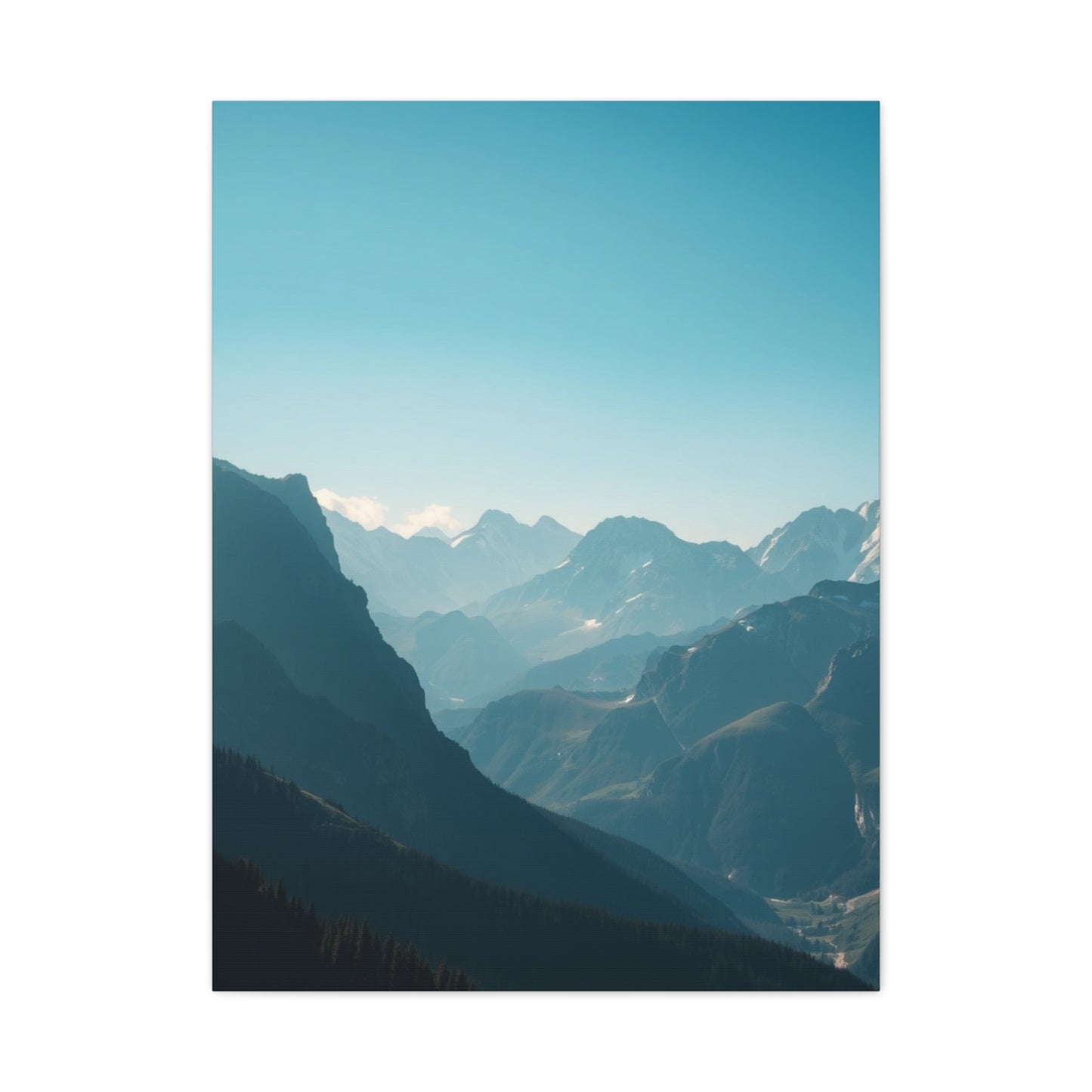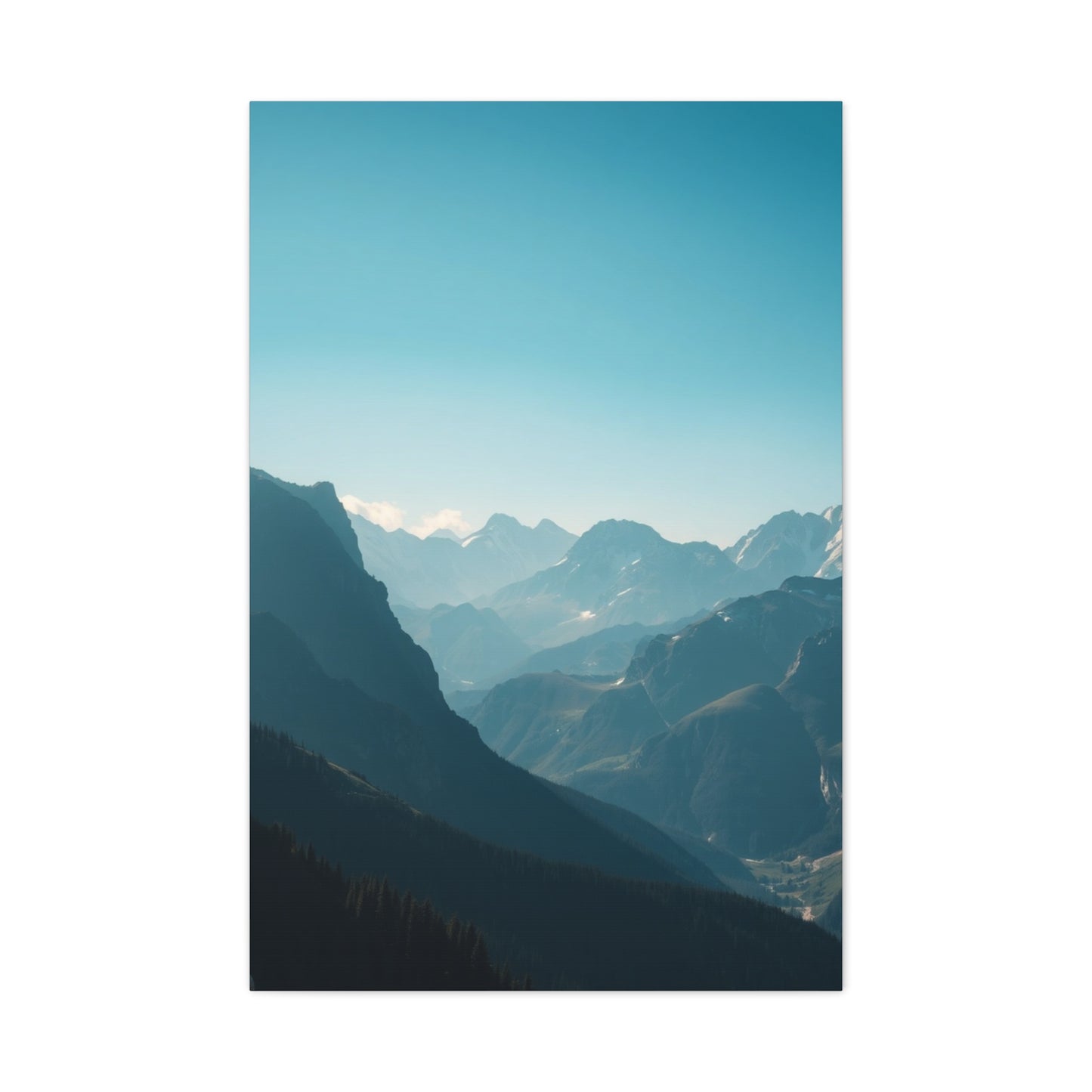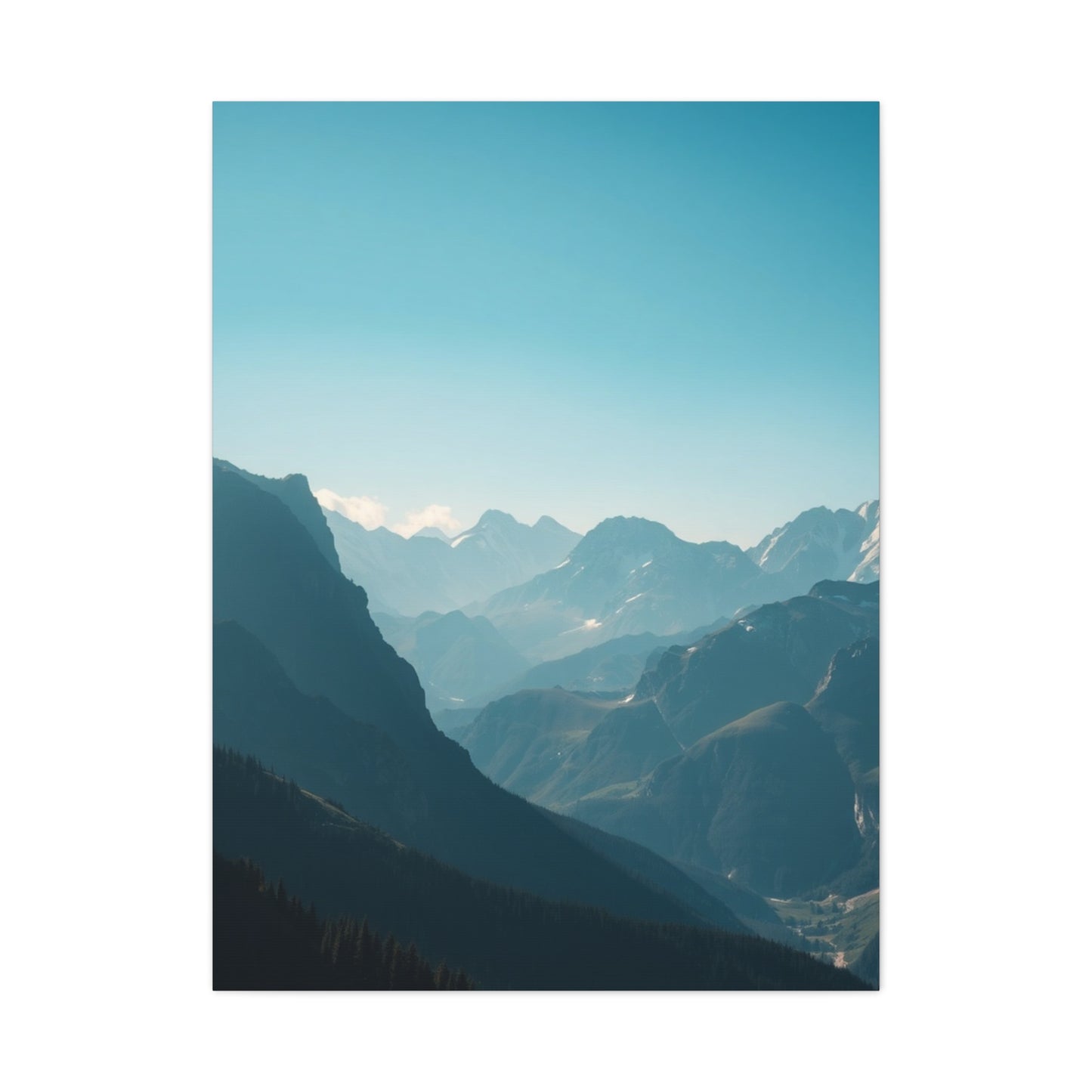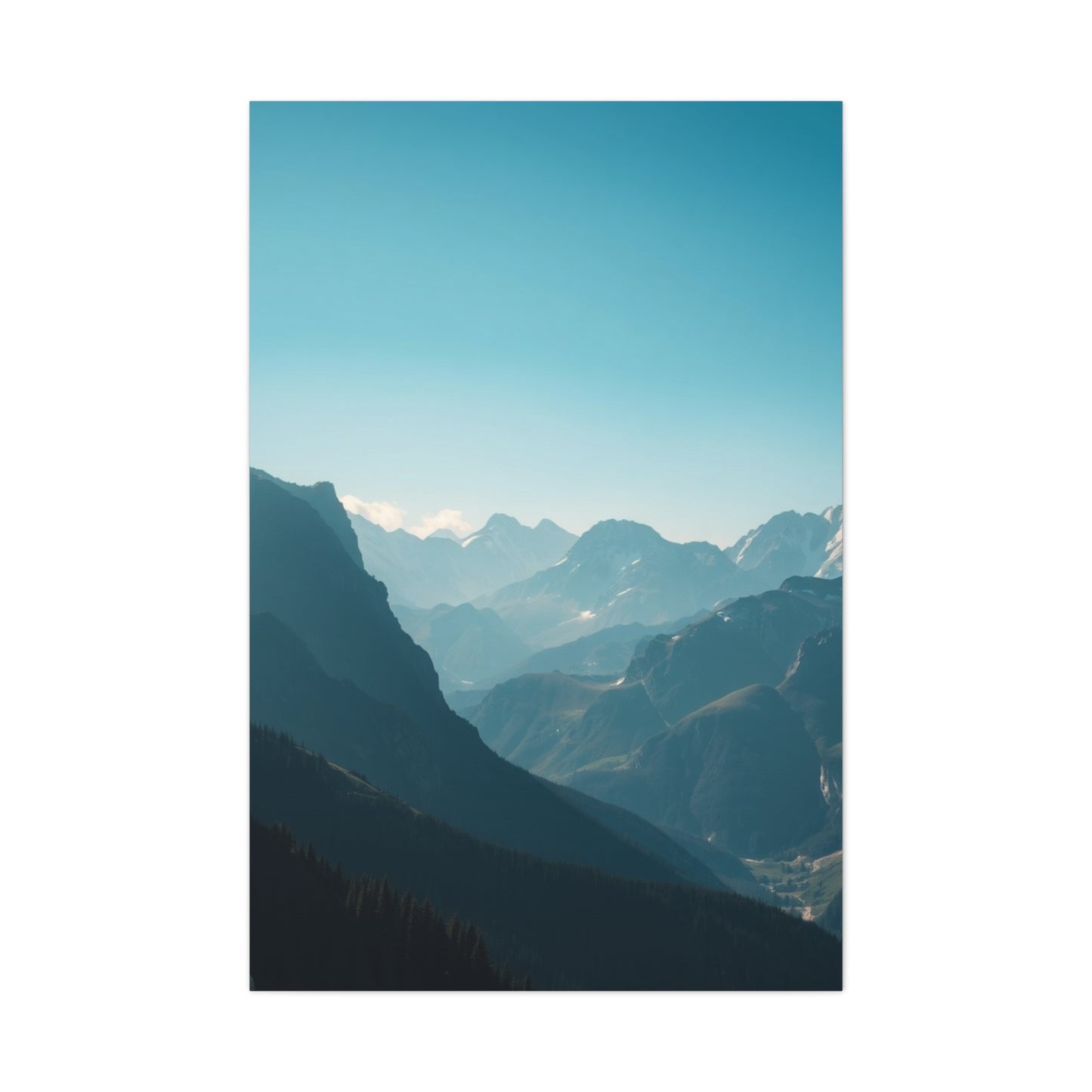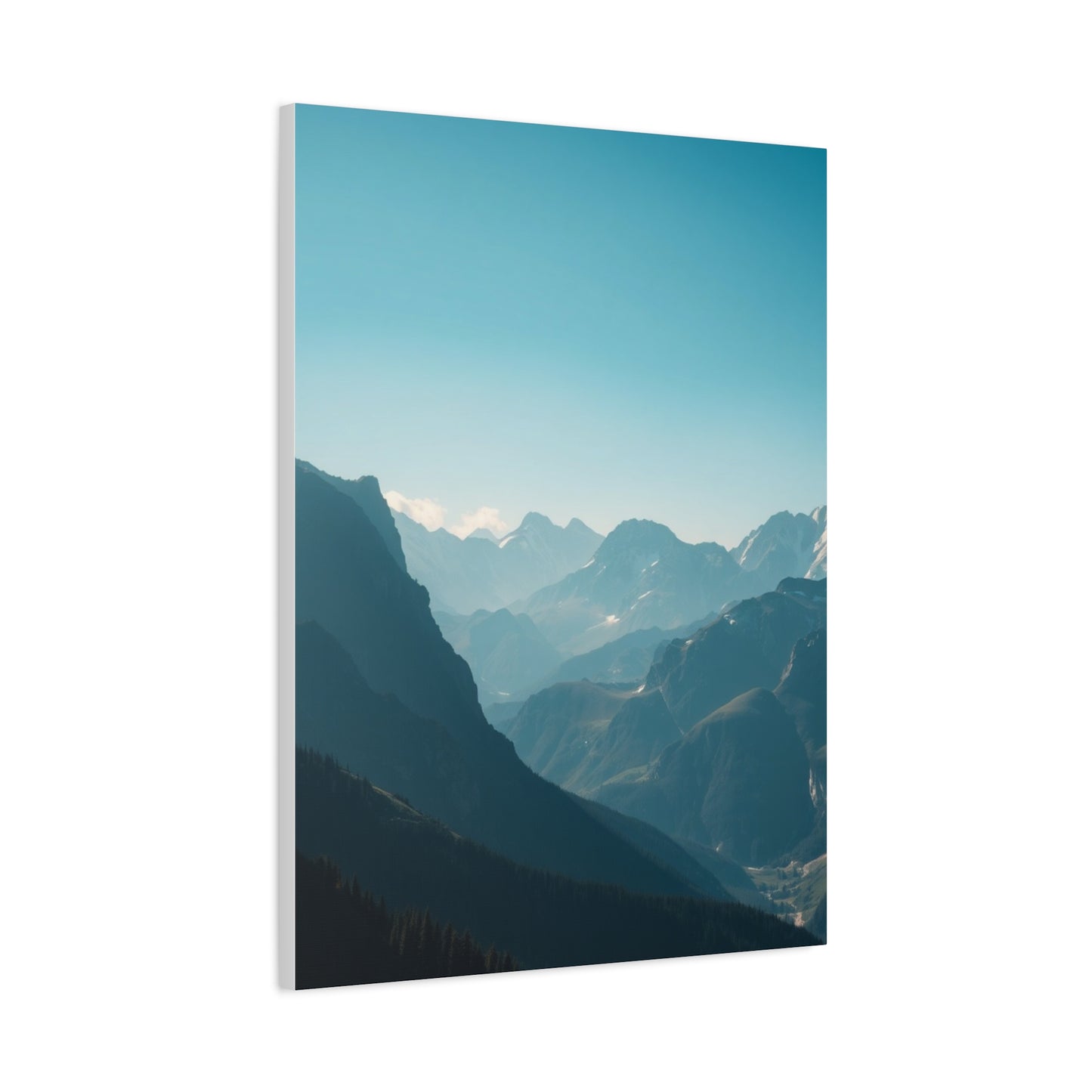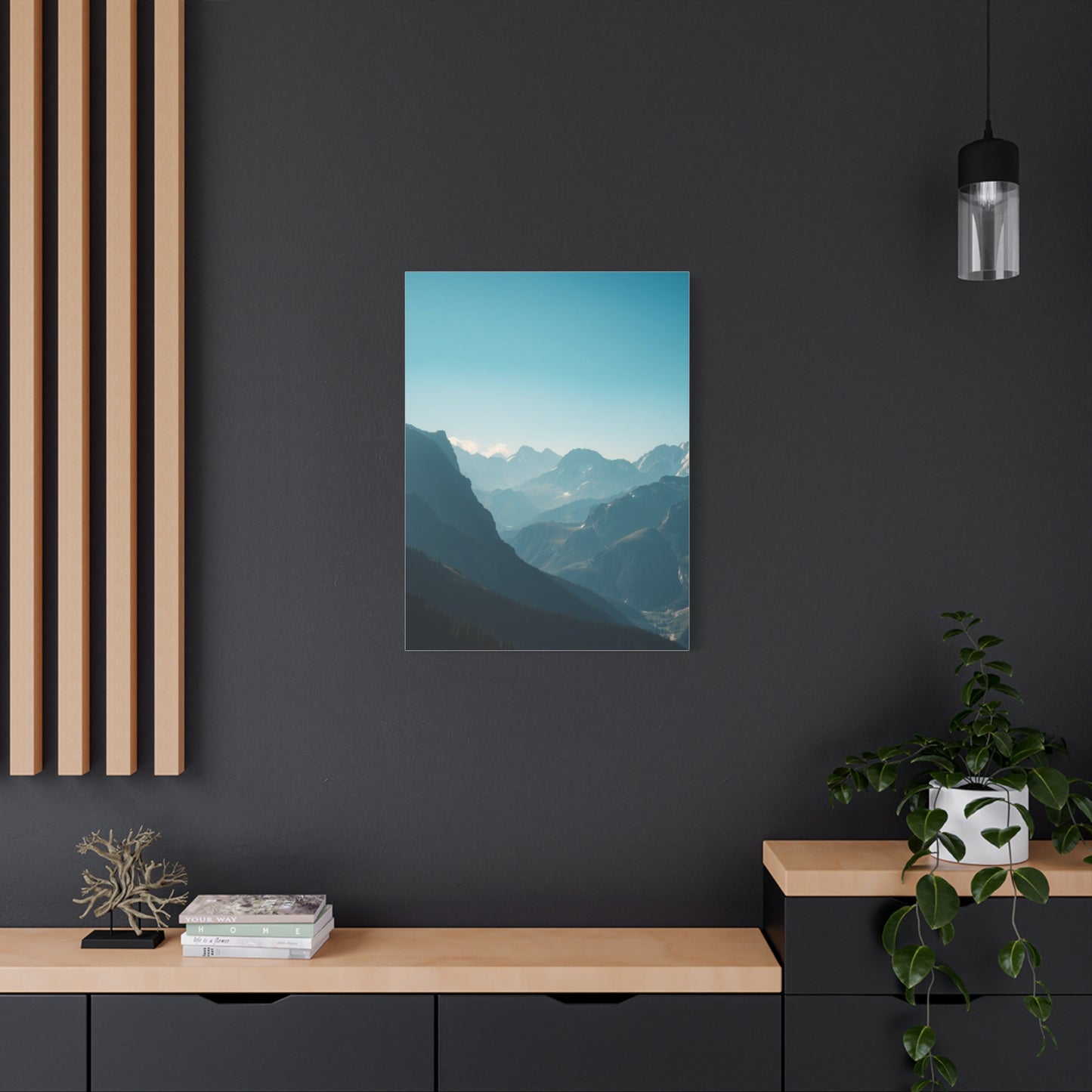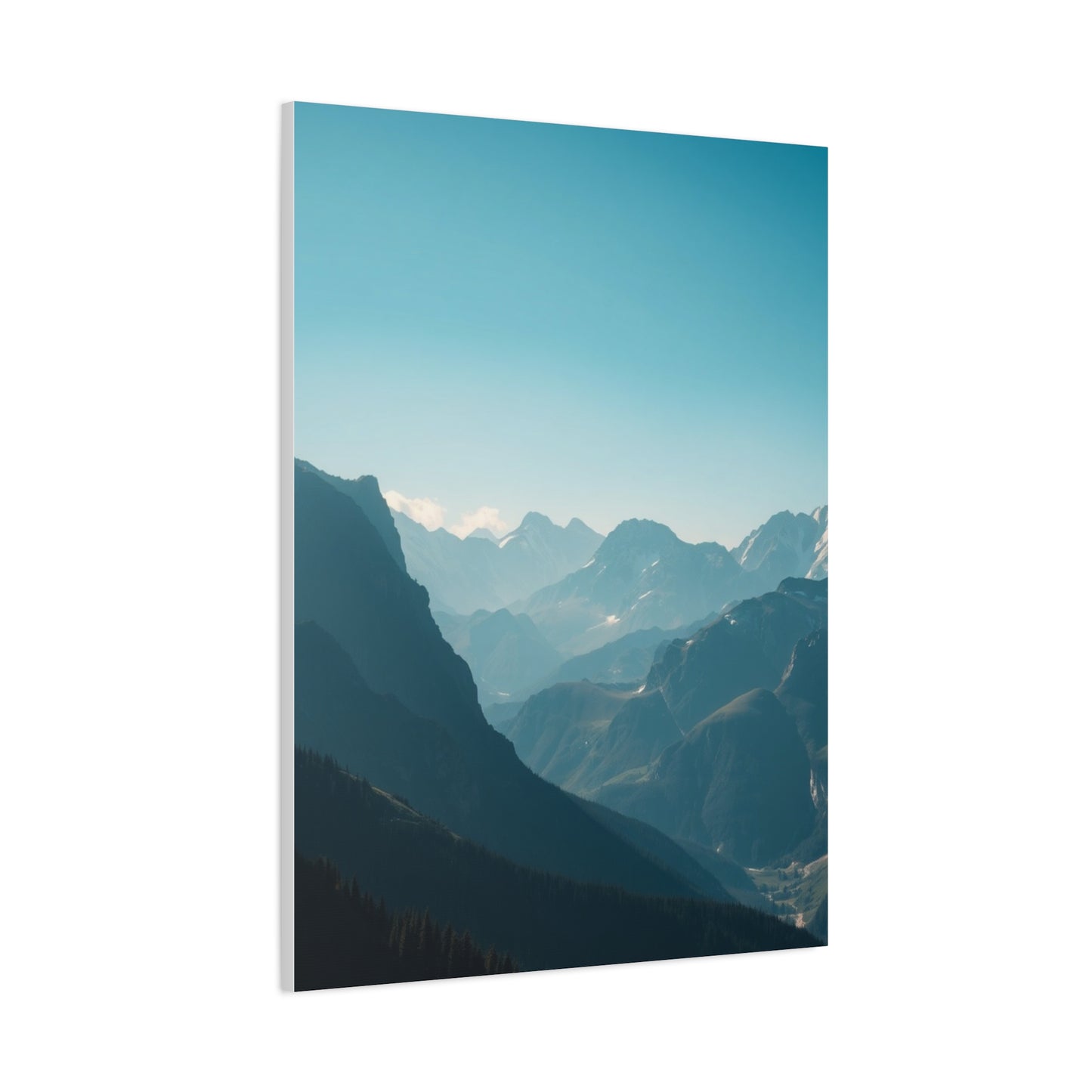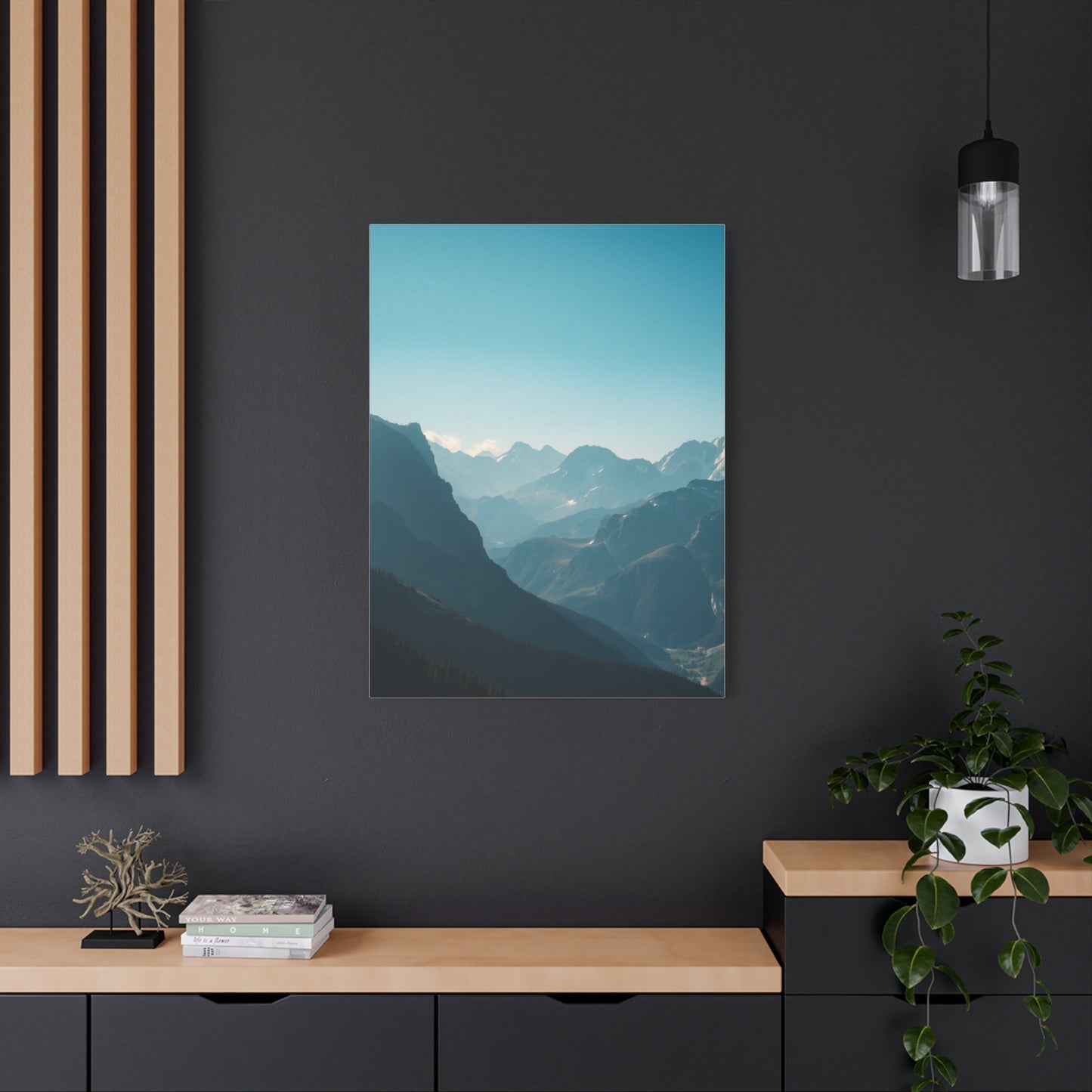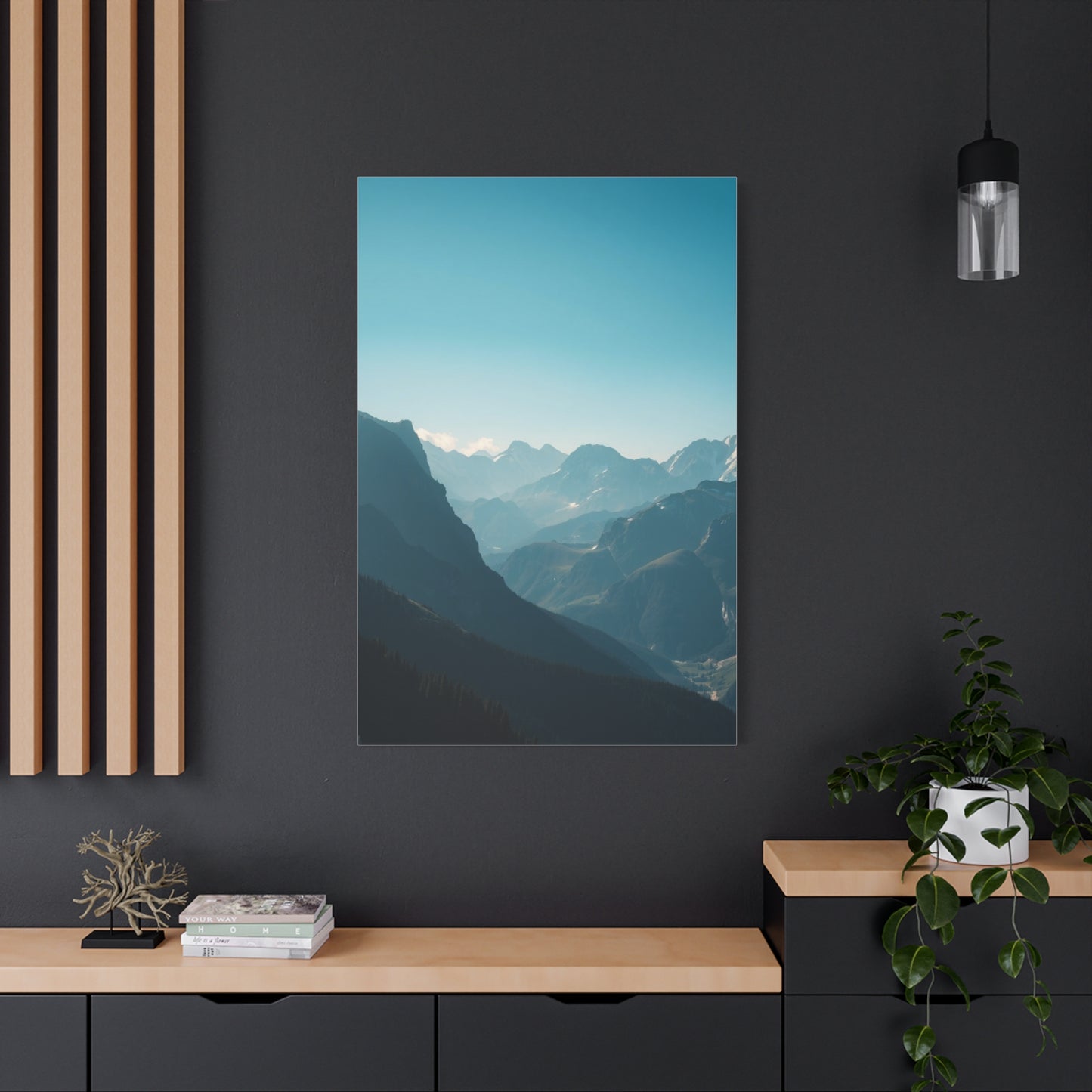Alpine Serenity Masterpiece Wall art: Transform Your Space with Mountain-Inspired Wall Art
The allure of mountain landscapes has captivated humanity for centuries, offering a sense of peace, grandeur, and connection to nature that few other natural formations can match. When we bring these majestic vistas into our living spaces through carefully curated wall art, we create more than just visual appeal—we establish a sanctuary of tranquility within our homes. Alpine serenity masterpiece wall art represents the pinnacle of this artistic expression, capturing the breathtaking beauty of mountain ranges in forms that speak to our deepest appreciation for natural wonder.
Mountain-themed artwork serves multiple purposes in contemporary interior design. Beyond its aesthetic contribution, it functions as a window to the wilderness, a daily reminder of nature's magnificence, and a source of inspiration that can influence our mood, productivity, and overall well-being. The psychological impact of incorporating natural imagery into our surroundings has been extensively documented, with studies consistently showing that exposure to natural scenes, even through artistic representation, can reduce stress levels, improve focus, and enhance emotional balance.
The concept of alpine serenity encompasses more than just the physical representation of mountains. It embodies the emotional and spiritual resonance these towering formations evoke—the sense of timelessness, the feeling of insignificance in the face of geological grandeur, and paradoxically, the profound connection to something greater than ourselves. When we select wall art that captures this essence, we're choosing pieces that will continue to reveal new dimensions of beauty and meaning over time, never becoming stale or losing their capacity to inspire wonder.
Selecting the Perfect Alpine Masterpiece for Your Space
Choosing mountain wall art that will truly enhance your space requires consideration of multiple factors beyond simple aesthetic preference. The relationship between artwork and environment determines whether a piece will feel perfectly integrated or perpetually out of place, whether it will elevate the room or get lost within it.
Size represents the most obvious consideration but one that's frequently misjudged. A common mistake is selecting artwork that's too small for the wall it will occupy, leaving the piece looking insignificant and the wall feeling incomplete. As a general guideline, artwork should occupy roughly two-thirds to three-quarters of the available wall width for optimal visual impact. For mountain scenes in particular, generous sizing helps convey the sense of scale that makes these landscapes so impressive. A small mountain painting on a large wall diminishes the very grandeur it's meant to represent.
The viewing distance also influences appropriate sizing. Artwork in living rooms or open-concept spaces, typically viewed from greater distances, can support larger formats than pieces in hallways or small rooms where viewers will be closer. Consider where you'll most often be when looking at the piece—from the sofa, from the dining table, while entering the room—and ensure it will have proper visual weight from these perspectives.
The style of mountain artwork should harmonize with your overall design aesthetic while potentially serving as either a complementary or contrasting element. Contemporary minimalist spaces often benefit from alpine art with clean lines, limited color palettes, and simplified forms—perhaps a black and white mountain photograph or a stylized geometric interpretation of peaks. Traditional interiors might call for more detailed, realistic mountain paintings with visible brushwork and classical composition. Rustic or cabin-style spaces naturally accommodate a wide range of mountain imagery, from vintage national park posters to wildlife-inclusive mountain scenes.
Color coordination deserves careful thought but shouldn't be overly restrictive. While artwork that echoes existing room colors creates immediate visual harmony, pieces that introduce new colors can enliven a space and prevent it from feeling monotonous. Mountain art offers flexibility here—the natural color range of alpine scenes includes neutrals that work anywhere, cool tones that refresh warm spaces, and occasional warm accents that add interest to cool-toned rooms.
The emotional tone of the mountain scene should align with the room's purpose and the atmosphere you wish to create. Dramatic mountain art featuring stormy skies, sharp peaks, and strong contrasts injects energy and grandeur but might feel too intense for bedrooms or other restful spaces. Softer scenes with gentle light, subtle colors, and peaceful compositions promote relaxation and contemplation. Consider whether you want the art to energize or calm, to impress or soothe, and select imagery accordingly.
Popular Styles of Alpine Wall Art and Their Unique Characteristics
Mountain artwork manifests in diverse styles, each offering distinct aesthetic qualities and emotional resonance. Understanding these different approaches helps in selecting pieces that align with personal taste and design objectives.
Photographic mountain art has gained tremendous popularity with advances in camera technology and printing methods. High-resolution landscape photography captures mountains with stunning clarity and detail, preserving the authentic colors, textures, and atmospheric effects of actual locations. The best mountain photography transcends mere documentation, using composition, lighting, and timing to create images with artistic impact. Black and white mountain photography strips away color to emphasize form, contrast, and tonal subtleties, often resulting in timeless, dramatic images that work in virtually any decor context.
Traditional painted mountain art continues to hold appeal for those who appreciate visible artistic technique and the unique qualities of hand-created work. Oil paintings offer rich colors and substantial texture, with brushstrokes adding physical dimension to the surface. Watercolor mountain scenes provide delicacy and luminosity, perfect for capturing atmospheric effects like mist or the subtle color gradations of dawn and dusk. Acrylic paintings combine vibrant color with versatility, allowing artists to work in styles ranging from realistic to highly abstract.
Abstract and contemporary interpretations of mountain themes offer sophisticated alternatives to literal representation. These pieces suggest mountain forms through simplified shapes, unexpected color choices, or emphasis on particular elements like texture or line. Abstract mountain art can be particularly effective in modern interiors where realistic landscape paintings might feel incongruous. The interpretive nature of abstract work also allows viewers to bring their own associations and meanings to the piece, creating a more personal connection.
Vintage and retro mountain art, including reproductions of historic national park posters and mid-century travel advertisements, has experienced a resurgence in recent years. These pieces carry nostalgic charm and often feature bold graphics, simplified forms, and saturated colors that make strong decorative statements. The historical aspect adds a layer of cultural interest beyond pure aesthetics.
Mixed media and three-dimensional mountain art pushes beyond traditional flat formats. Some pieces incorporate actual natural materials like stone, wood, or metal to create textured surfaces that reference mountain composition. Others use layered elements to create depth and shadow, transforming wall art into sculptural objects. These innovative approaches suit contemporary spaces and collectors seeking something beyond conventional artwork.
Digital and graphic mountain art represents a growing category, with artists using software to create everything from hyper-realistic digital paintings to geometric, vector-based mountain designs. The precision possible with digital tools produces clean, modern aesthetics particularly suited to minimalist and contemporary interiors. The reproducibility of digital art also makes it more accessible while maintaining high visual quality.
The Role of Color Schemes in Alpine Art Selection
Color profoundly influences how mountain artwork affects a space and the emotions it evokes. The natural color palette of alpine environments is remarkably diverse, shifting with seasons, weather, altitude, and time of day, providing artists and collectors with rich options to explore.
Cool color mountain art, dominated by blues, greens, and purples, creates an atmosphere of tranquility and spaciousness. These colors recede visually, making rooms feel larger and more open. Cool-toned mountain scenes work exceptionally well in bedrooms, bathrooms, and meditation spaces where relaxation is the primary goal. They also help balance rooms with warm-colored furnishings or those receiving abundant natural light from south-facing windows. The psychological associations with cool colors include calmness, introspection, and mental clarity, making this palette ideal for home offices and study areas as well.
Warm color mountain art featuring sunrise and sunset scenes introduces oranges, reds, pinks, and golds into the palette. These hues create inviting, energizing atmospheres and work beautifully in social spaces like living rooms and dining areas. Warm tones advance visually, making them effective for creating focal points and adding personality to neutral spaces. The emotional impact leans toward comfort, optimism, and vitality. In mountain imagery, warm colors often appear in transitional light—dawn and dusk—adding a temporal quality that suggests change and possibility.
Neutral and monochromatic mountain art offers sophistication and versatility. Black and white mountain photography or paintings deliver maximum drama through contrast and form alone, stripped of color's emotional overlay. These pieces integrate seamlessly into virtually any color scheme and work particularly well in modern, minimalist, or industrial-style interiors. The absence of color draws attention to composition, light quality, texture, and tonal relationships, often resulting in images that feel more timeless than their colorful counterparts. Sepia-toned or grayscale mountain art adds subtle warmth while maintaining the versatility of monochromatic work.
Seasonal color variations in mountain art allow you to select pieces that either complement or contrast with your local climate and seasonal experience. Winter mountain scenes with their whites, grays, and pale blues can either extend the feeling of winter in cold climates or provide cooling visual relief in perpetually warm regions. Summer alpine meadow scenes with vibrant greens and wildflower colors bring warmth and vitality that might be especially welcome in areas with long, gray winters. This consideration adds a strategic dimension to art selection beyond pure aesthetic preference.
The saturation level of colors in mountain art significantly impacts its visual intensity and appropriate context. Highly saturated colors create bold, energetic statements suitable for contemporary spaces and for making strong focal points. Desaturated or muted colors produce more subtle, sophisticated effects that recede visually, working well in traditional interiors and in spaces where calm is prioritized. Many of the most successful alpine serenity pieces feature moderate saturation that balances visual interest with restfulness.
Framing and Presentation Options for Mountain Art
The way mountain artwork is framed and mounted dramatically affects its visual impact and integration with surrounding decor. Thoughtful framing choices enhance the art while helping it relate successfully to its architectural and decorative context.
Traditional framing with substantial wooden or metal frames adds weight and importance to mountain artwork, signaling that the piece deserves attention and respect. Ornate frames suit classical mountain paintings and traditional interiors, while simpler frame profiles work better with contemporary art and modern spaces. Frame color and finish should relate to both the artwork and the room—dark frames add drama and contrast with light walls, light frames create airiness and suit dark walls or lighter artwork. The matting between artwork and frame creates breathing room that prevents the composition from feeling cramped, with neutral mat colors allowing the art to dominate while colored mats can pull out specific hues from the piece.
Floating frames and frameless mounting create modern, clean presentations that suit contemporary mountain photography and graphic mountain art. These approaches emphasize the image itself by minimizing the presence of framing elements. Gallery wraps, where canvas artwork extends around the edges of the stretcher bars, eliminate the need for traditional frames entirely while giving the piece substantial physical presence. This presentation works particularly well for large-scale mountain photography and paintings, creating an immersive quality.
Metal prints represent an innovative presentation method particularly suited to mountain photography. The image is infused onto aluminum sheets, resulting in extraordinary color vibrancy, sharpness, and a subtle luminosity that seems to emanate from within the piece. The sleek, modern appearance of metal prints complements contemporary and industrial interiors, while their durability makes them practical for high-traffic areas.
Acrylic face mounting involves sandwiching a print between acrylic sheets, creating depth and a glass-like finish with exceptional clarity and color saturation. This high-end presentation method suits upscale contemporary interiors and allows mountain photography to achieve almost three-dimensional visual depth. The acrylic surface is also highly durable and easy to clean, practical considerations for long-term display.
Multi-panel presentations divide a single mountain scene across two, three, or more separate panels installed with spacing between them. This approach, often called diptych or triptych format, creates visual interest through the interruption and continuation of the image across panels. The contemporary aesthetic works well in modern spaces and allows very large mountain scenes to be displayed without overwhelming rooms. The spacing between panels provides rhythm and lets wall color participate in the overall composition.
Incorporating Alpine Art into Different Room Settings
Each room in a home presents unique opportunities and challenges for mountain artwork integration. Understanding the specific character and functional requirements of different spaces helps in selecting and positioning alpine art for maximum effect.
Living rooms serve as primary social and relaxation spaces, making them ideal locations for statement mountain artwork. The scale of living rooms typically accommodates larger pieces that capture attention and establish the room's aesthetic tone. Positioning mountain art above sofas creates natural focal points, while gallery walls featuring multiple complementary mountain images add visual interest and personality. The viewing distances common in living rooms support both large dramatic pieces and collections of smaller works. Consider how the mountain art relates to other design elements—it might complement existing nature-inspired decor or provide contrast with more urban or abstract elements elsewhere in the room.
Bedrooms benefit particularly from the calming qualities of serene mountain imagery. The last images we see before sleep and the first upon waking influence our mental state, making peaceful alpine scenes valuable contributors to restful bedroom atmospheres. Positioning mountain art where it's visible from the bed allows its tranquil qualities to support relaxation and reflection. Scale should be generous enough to create impact without overwhelming the often-intimate proportions of bedrooms. Color palettes leaning toward cool tones or gentle warm hues support the restorative function of these spaces.
Home offices and study areas profit from mountain art's ability to provide mental respite during focused work. Brief visual breaks spent gazing at mountain scenes can reduce eye strain from screens and reset mental focus during demanding tasks. The symbolic associations of mountains with achievement, perspective, and overcoming challenges make alpine imagery psychologically appropriate for spaces dedicated to professional pursuits. Positioning artwork within easy view but not directly behind computer monitors allows for these beneficial visual breaks without creating screen glare or distraction during concentrated work.
Dining spaces welcome mountain art that encourages conversation and creates pleasant dining atmospheres. Mountain scenes with interesting details or dramatic lighting provide natural conversation topics, while the generally peaceful quality of alpine imagery promotes the relaxed dining experiences we seek. The social nature of dining areas supports more dramatic or colorful mountain art that might feel too intense in bedrooms or meditation spaces. Consider how lighting in dining areas will affect the artwork—both natural light during daytime meals and artificial lighting during evening gatherings.
Bathrooms and powder rooms often get overlooked in art placement, but these private spaces offer opportunities for personal expression and creating spa-like atmospheres. Smaller mountain pieces work well in these typically more compact spaces, while the moisture considerations of bathrooms make properly sealed prints or moisture-resistant materials important. Mountain art in bathrooms reinforces the connection between water and nature, supporting these spaces' roles in personal renewal and refreshment.
Hallways and transitional spaces benefit from mountain art that creates visual interest in areas people pass through regularly. These spaces support gallery-style arrangements of multiple complementary mountain images or sequences of related pieces that create a journey-like experience as people move through the space. The narrower viewing angles typical of hallways influence appropriate artwork dimensions—pieces might be taller relative to their width than those in rooms where viewing from various angles is possible.
Creating Gallery Walls with Mountain Themes
Gallery walls offer opportunities to display multiple mountain artworks in cohesive, visually engaging arrangements. This approach works particularly well for collectors with various alpine pieces they wish to showcase or for creating substantial visual impact in larger spaces.
Planning a successful mountain gallery wall begins with selecting a unifying theme or aesthetic thread that connects the various pieces. This might be geographic—all images from a specific mountain range or region. It could be stylistic—mixing photographs, paintings, and prints but maintaining a consistent visual approach such as black and white or minimalist composition. Seasonal themes work well, showing mountain landscapes through different times of year. Or the connection might be emotional, grouping pieces that share a mood such as dramatic, serene, or mysterious.
The physical arrangement of pieces requires careful consideration of balance, spacing, and visual flow. Symmetrical arrangements create formal, orderly impressions suitable for traditional spaces, while asymmetrical layouts feel more dynamic and contemporary. A common approach involves identifying the largest or most visually striking piece as the anchor, positioning it first (often at eye level in a central location), then arranging other works around it. Maintaining consistent spacing between frames (typically two to three inches) creates cohesion, preventing the arrangement from feeling chaotic.
Mixing frame styles within a mountain gallery wall requires a unifying element to maintain coherence. This might be consistent frame color despite varying profiles, or similar frame materials (all wood or all metal) in different finishes. Alternatively, maintaining consistent matting appearance while varying frames can tie diverse pieces together. Some collectors prefer uniform framing for clean, gallery-like presentation, while others embrace eclectic mixing for more personal, collected-over-time aesthetics.
Scale variation adds visual interest to gallery walls, but the differences shouldn't be so extreme that some pieces get lost while others dominate excessively. A useful approach involves grouping similar-sized pieces while including a few larger or smaller works for accent. Odd numbers of pieces often create more dynamic, natural-feeling arrangements than even numbers.
Seasonal Variations in Mountain Art Selection
Mountains transform dramatically with the seasons, and artwork capturing these variations offers opportunities to either reflect local seasonal changes or provide contrasting imagery that expands our environmental experience.
Winter mountain art presents peaks shrouded in snow and ice, often rendered in a predominantly white, blue, and gray palette. The stark beauty of winter mountains carries a unique serenity, with snow simplifying landscapes into essential forms and creating dramatic contrasts between light and shadow. Winter scenes work beautifully in creating cooling visual effects in warm climates, while in cold regions they might either embrace the local season or be reserved for display only during winter months. The psychological impact of winter mountain imagery leans toward contemplation, purity, and quietude.
Spring mountain art captures the transitional character of this season in alpine environments. Lower elevations burst with wildflowers while higher peaks retain winter snow, creating compelling visual contrasts. The color palette shifts toward fresh greens, vibrant wildflower hues, and clearer blues as atmospheric haze diminishes. Spring mountain scenes carry associations with renewal, hope, and awakening, making them psychologically uplifting choices particularly welcome after long winters. The dynamic quality of spring in mountains, with rapidly changing conditions and the drama of snowmelt, provides artists with rich subject matter.
Summer mountain art showcases peaks at their most accessible and colorful. Alpine meadows reach full bloom, creating carpets of wildflowers below rocky summits. The summer palette features the most saturated greens and blues, with warm sunny lighting that differs markedly from other seasons. Summer mountain scenes evoke vacation, adventure, and outdoor recreation, carrying associations with leisure and freedom. These images work well in active spaces and can provide psychological warmth in rooms that lack natural light.
Autumn mountain art presents some of the most dramatic color opportunities, with deciduous vegetation at lower elevations transforming into brilliant reds, oranges, and golds while evergreens maintain their deep greens and higher elevations may already show early snow. The complex color harmonies of autumn mountains work well in warm-toned interiors and add richness without overwhelming. Autumn carries associations with harvest, transition, and reflection, creating subtly different emotional tones than other seasons.
The decision to rotate mountain artwork seasonally or maintain consistent display year-round depends on personal preference and practical considerations. Seasonal rotation keeps spaces feeling fresh and responsive to changing conditions but requires storage space and effort to change pieces several times yearly. Maintaining the same mountain art throughout seasons creates visual consistency and allows deeper relationship development with specific pieces. Some collectors compromise by keeping major pieces constant while rotating smaller accent pieces seasonally.
Mountain Art Styles for Minimalist Interiors
Minimalist design philosophies emphasizing simplicity, clean lines, and uncluttered spaces require thoughtful art selection. Mountain imagery translates effectively into minimalist contexts when approached with appropriate aesthetic sensibilities.
Simplified mountain forms work beautifully in minimalist settings, reducing complex landscape elements to essential shapes and lines. These pieces might show mountain silhouettes against clear skies, or use geometric interpretation to suggest alpine forms without detailed representation. The restraint of minimalist mountain art aligns with minimalist design principles, providing visual interest without cluttering spaces or competing with architectural elements.
Monochromatic mountain art serves minimalist interiors particularly well. Black and white mountain photography or prints deliver maximum visual impact through contrast and composition while maintaining the color restraint minimalist spaces demand. The absence of color prevents artwork from clashing with carefully controlled minimalist color palettes and keeps the focus on form, light, and texture. Grayscale mountain scenes also carry a timeless quality that aligns with minimalism's avoidance of trendy elements.
Negative space plays crucial roles in both minimalist design and in mountain art suited to these contexts. Artwork featuring mountains with substantial sky or foreground simplicity embodies minimalist principles by showing when to leave areas unadorned. This approach also helps the artwork integrate seamlessly with the substantial empty wall space typical in minimalist rooms, creating continuity rather than jarring contrast.
Linear mountain art using simple line work to suggest mountain forms offers another minimalist-appropriate approach. These pieces might use single continuous lines, contour lines, or simple geometric lines to create mountain representations that feel almost diagrammatic. The visual lightness of linear art prevents it from overwhelming minimalist spaces while adding necessary human touch and interest.
Large-Scale Mountain Art for Maximum Impact
Substantial mountain artwork transforms spaces in ways smaller pieces cannot match, creating focal points that command attention and significantly influence room atmosphere. Large-scale presentations bring unique considerations and opportunities.
The dramatic impact of oversized mountain art stems from its ability to create immersive visual experiences. When mountain images reach sizes where they fill significant portions of our visual field, they begin to function almost as windows, momentarily transporting viewers into the landscape depicted. This quality makes large mountain art particularly effective for creating the sense of connection with nature that motivates many collectors.
Architectural scale matching represents an important consideration with large mountain art. Rooms with high ceilings, substantial square footage, or expansive open-concept layouts require artwork of corresponding scale to maintain visual proportion. A small piece on a large wall creates an awkward dynamic, leaving the wall feeling incomplete while the artwork appears insignificant. Large mountain art scaled appropriately to architectural space creates harmony and intentionality.
Multi-panel large-scale mountain art offers flexibility in very large applications. Breaking a single panoramic mountain scene across three, four, or five panels allows for total widths exceeding what would be practical in single pieces while maintaining manageable sizes for individual components. The spacing between panels adds architectural dimension and allows wall color to participate in the composition. This approach also facilitates shipping, installation, and potential future reconfiguration.
The viewing distance for large mountain art should factor into size decisions. Artwork meant to be viewed from across large rooms can support very substantial dimensions—even reaching eight or ten feet wide in spacious settings. The detail level should match viewing distances, with sufficient resolution in photographic prints to maintain quality at close inspection or appropriate brushwork scale in paintings.
Focal point creation through large mountain art requires consideration of room layout and traffic patterns. The wall on which large artwork hangs becomes a primary visual destination, so it should be positioned where it can be appreciated without awkward furniture arrangement or viewing angles. In living rooms, the wall behind or opposite seating areas often works well. In dining rooms, the wall most visible from the table makes sense. Open concept spaces might use large mountain art to define zones or provide visual anchors.
Color dominance in large mountain art significantly impacts room atmosphere due to the substantial surface area involved. A large piece featuring predominantly cool blues will cool the entire space psychologically, while warm-toned mountain art will warm it. This isn't necessarily problematic—the effect might be exactly what you're seeking—but it requires awareness during selection. The color balance between artwork and surrounding elements becomes particularly important at large scales.
Affordable Options for Alpine Wall Art
High-quality prints of mountain photography and paintings have become increasingly accessible and affordable through digital printing technologies. Many talented mountain photographers and artists sell prints of their work directly through online platforms, eliminating gallery markups. These prints, when produced with archival inks on quality paper or canvas, offer excellent longevity and visual appeal at a fraction of the cost of original works or limited editions.
Print-on-demand services allow you to select mountain images from vast libraries and have them printed to your specified size and on your chosen material. While these services vary in quality, reputable options produce excellent results suitable for home display. This approach provides maximum flexibility in sizing and format, allowing you to create exactly what your space requires rather than compromising based on available pre-made options.
DIY framing significantly reduces the overall cost of mountain art presentation. Ready-made frames in standard sizes offer affordable, attractive options for standard-sized prints. For non-standard sizes, local frame shops often provide custom framing at reasonable rates, particularly if you select simpler frame profiles and mats. Some collectors even venture into cutting their own mats and assembling frames, reducing costs further while gaining satisfaction from hands-on involvement.
Temporary and seasonal rotation of affordable mountain art keeps spaces feeling fresh without major investment. Rather than purchasing expensive permanent pieces, you might maintain a collection of more affordable works that rotate through display locations. This approach prevents visual fatigue, allows you to respond to seasonal changes, and spreads limited budget across greater variety.
Maintaining and Caring for Mountain Wall Art
Proper maintenance preserves the beauty and longevity of mountain artwork, protecting your investment and ensuring pieces continue enhancing your space for years to come.
Dust accumulation represents the most common maintenance issue for wall art. Regular gentle dusting prevents buildup that can eventually embed in surface textures or penetrate frames. For framed pieces behind glass or acrylic, a soft microfiber cloth used dry or slightly dampened with water works well. Avoid spraying cleaning products directly onto glass, as liquid can seep behind glazing and damage artwork. Instead, spray cloth lightly away from the artwork, then wipe glass surfaces. For unframed canvas or textured pieces, a soft brush or compressed air removes dust without physical contact that might damage surfaces.
UV protection preserves colors and prevents fading, particularly important for mountain art where sky blues and other susceptible colors often feature prominently. UV-filtering glazing on framed works blocks harmful wavelengths while maintaining transparency. For unglazed pieces, positioning away from direct sunlight provides the primary protection. UV-filtering window films on nearby windows offer additional protection while allowing natural light to enter spaces. Regular inspection for any early signs of fading allows you to adjust placement before damage becomes significant.
Humidity control prevents problems ranging from mold growth to material warping. Excessive humidity can cause paper to buckle, wood frames to warp, and mold to develop on organic materials. Very low humidity can make paper brittle and cause paint to crack. Maintaining moderate, stable humidity levels (ideally 40-50 percent) protects artwork. In particularly humid environments, dehumidifiers help, while humidifiers can be beneficial in very dry climates. Avoid hanging artwork in inherently humid locations like bathrooms unless pieces are specifically designed for such conditions.
Temperature stability complements humidity control in artwork preservation. Avoid hanging mountain art above heat sources like radiators, fireplaces, or heating vents where temperature fluctuations are greatest. Attics, garages, and other unconditioned spaces provide poor storage environments for artwork during periods when pieces aren't displayed. The expansion and contraction caused by temperature changes stresses materials and accelerates deterioration.
Inspection routines help identify developing problems before they require major intervention. Periodically examine mountain art for any signs of fading, discoloration, mold, insect damage, or frame deterioration. Check that hanging hardware remains secure and that frames sit level on walls. For valuable pieces, annual or biannual thorough inspections make sense, while more casual works might be reviewed less frequently.
The Connection Between Mountain Art and Biophilic Design
The biophilia hypothesis suggests humans possess an innate tendency to seek connections with nature and other forms of life, a trait developed through evolutionary history. For millennia, human survival depended on maintaining awareness of natural environments and responding appropriately to natural features. Mountains served as landmarks for navigation, sources of water through their snowmelt, and boundaries defining territories. This deep history has left us with instinctive responses to mountain imagery that operate below conscious awareness.
Indirect nature experience through imagery provides measurable benefits when direct nature contact isn't possible. Research shows that even viewing photographs or paintings of natural scenes can reduce stress markers, improve cognitive function, and enhance mood. For urban dwellers or those whose mobility limits outdoor access, mountain wall art provides crucial nature connection that contributes to psychological and physiological wellbeing. This isn't merely pleasant decoration—it's a health-supporting environmental element.
Visual complexity at appropriate levels engages attention without overwhelming, a quality many mountain landscapes naturally possess. Biophilic design seeks to replicate the moderate complexity of natural environments—neither boringly simple nor chaotically complicated. Mountain scenes typically include varied elements (peaks, valleys, vegetation, sky, water) arranged in compositions our perceptual systems find inherently engaging. This natural visual richness provides the variety humans crave while maintaining overall coherence.
Fractal patterns, which appear throughout nature including in mountain formations, hold particular psychological appeal. These self-similar patterns repeating at different scales characterize mountain ridgelines, drainage patterns, and the distribution of vegetation. Research suggests humans find fractal patterns particularly relaxing and aesthetically pleasing, with preference peaks at complexity levels common in natural scenes. Mountain art that captures these natural fractal qualities taps into deep perceptual preferences.
Prospect and refuge qualities in mountain imagery satisfy evolutionary preferences for environments offering both open views and protected spaces. Mountain landscapes naturally provide visual access to surrounding terrain while also offering valleys, forests, and rock formations suggesting shelter. Artwork capturing this duality unconsciously appeals to ancient survival instincts favoring environments where we could see without being seen, hunt while avoiding becoming prey, and monitor territory while maintaining security.
Regional Mountain Styles and Cultural Perspectives
Alpine European mountain art draws from centuries of tradition in regions where peaks have profoundly shaped culture and identity. Swiss, Austrian, and Northern Italian mountain art often features dramatic limestone peaks, alpine villages, and the specific quality of light found at these latitudes. The cultural relationship with mountains as both beautiful and economically important (through tourism and historic trade routes) creates art that balances appreciation with familiarity. Traditional alpine art might include pastoral elements—mountain huts, grazing animals, shepherds—that reflect the human relationship with these landscapes.
Asian mountain art traditions, particularly from China, Japan, and Korea, approach mountain representation with philosophical and spiritual dimensions distinct from Western traditions. Chinese landscape painting (shanshui) considers mountains sacred and treats their depiction as meditation and spiritual practice rather than mere representation. The emphasis falls on capturing essential mountain spirit rather than physical accuracy, with mist, clouds, and empty space playing crucial compositional roles. Japanese mountain art often features sacred Mount Fuji, whose perfect volcanic cone appears in everything from classical ukiyo-e prints to contemporary photography. The reverence for mountains as spiritual entities permeates these traditions.
American Western mountain art emerged from the dramatic landscape of the Rockies, Sierra Nevada, and other western ranges. The scale and drama of these relatively young, geologically active mountains inspired grandiose romantic paintings in the nineteenth century and continue to influence contemporary mountain art. The cultural associations of western mountains with frontier mythology, individual freedom, and natural preservation movements (national parks originated in protecting western mountain regions) adds layers of meaning to artwork depicting these landscapes.
Himalayan mountain art responds to the highest peaks on Earth, where altitude creates landscapes of almost otherworldly appearance. The severe beauty of these high-altitude environments, the cultural significance of peaks like Everest, and the Buddhist spiritual traditions of Himalayan regions all influence how these mountains are represented artistically. Himalayan art often conveys extremity—of altitude, of environmental harshness, of the physical and mental challenges these peaks present to those who approach them.
Scandinavian mountain art reflects the distinctive character of northern mountains with their midnight sun, northern lights, fjords, and unique vegetation. The quality of light at northern latitudes creates atmospheric effects rarely seen elsewhere—long golden hours, extended twilights, and the dramatic darkness of winter. Norwegian, Swedish, and Finnish mountain art captures these distinctive qualities, creating aesthetically unique work that differs markedly from mountain art of lower latitudes.
Mountain Art in Commercial and Hospitality Spaces
Hotels and resorts, particularly those in or near mountain regions, use alpine art to reinforce location identity and create atmosphere. Mountain lodges and ski resorts naturally incorporate extensive mountain imagery, but even urban hotels might use mountain art to suggest escape, adventure, or natural luxury. The scale of commercial spaces typically accommodates very large mountain art installations that would overwhelm residential rooms. Hotel lobbies might feature wall-spanning mountain murals or multi-story mountain photography that establishes dramatic first impressions. Guest rooms use mountain art to create restful atmospheres while maintaining location connection.
Restaurants and bars employ mountain art to establish ambiance and reinforce concepts. A steakhouse might use dramatic mountain landscape art to suggest rugged Western associations, while a contemporary restaurant might feature stylized or abstract mountain interpretations aligning with modern cuisine. Breweries and distilleries, particularly those using mountain water sources, often incorporate alpine imagery in branding and decoration. The art selection should complement rather than compete with the social experience, providing visual interest without demanding so much attention that it distracts from conversation and dining.
Corporate offices increasingly recognize that environmental quality affects employee satisfaction, productivity, and retention. Mountain art in office settings provides the nature connection increasingly understood as psychologically beneficial. Conference rooms, private offices, break rooms, and public spaces all accommodate mountain art appropriate to their functions. The symbolism of mountains—stability, vision, achievement, overcoming challenges—aligns well with corporate aspirations, making alpine imagery thematically appropriate beyond its aesthetic contribution.
Medical and dental offices benefit particularly from mountain art's calming qualities. Patients in healthcare settings often experience anxiety that peaceful mountain imagery can help mitigate. Waiting areas, examination rooms, and treatment spaces all provide opportunities for mountain art that contributes to more positive patient experiences. The nature connection mountain art provides supports healing environments increasingly recognized as important in healthcare design.
Creating Custom Mountain Art Commissions
Defining commission parameters clearly before engaging artists prevents misunderstandings and ensures better outcomes. Consider what specific mountain location, if any, you want depicted, or whether you prefer invented idealized mountain landscapes. Determine desired size precisely, measuring the intended display location and considering viewing distances. Specify preferred medium—oil paint, watercolor, acrylic, mixed media, photography—as each offers distinct aesthetic qualities. Establish a realistic timeline, recognizing that quality original art requires time, particularly for larger or complex pieces.
Budget discussions should happen early and openly. Original art commissions range enormously in cost depending on artist reputation, piece size, medium complexity, and timeline. Established artists command higher prices than emerging ones, though both may produce excellent work. Be clear about your budget parameters while remaining somewhat flexible—if an artist's quote slightly exceeds your initial budget but you love their work, the additional investment might be worthwhile. Understand what the quoted price includes—does it cover framing, delivery, installation? Are revisions included?
Communication throughout the commission process ensures the final piece meets expectations. Most artists provide preliminary sketches or digital mockups for approval before investing extensive time in final execution. Review these carefully, providing clear feedback about any adjustments desired. Remember that you're commissioning the artist's interpretation rather than directing every detail—trust their artistic judgment while ensuring the overall direction aligns with your vision. Regular check-ins during longer projects help catch any emerging misalignments early.
Reference materials help artists understand your vision when commissioning specific mountain locations or particular atmospheric qualities. Provide photographs, describing what specifically appeals to you about them—is it the color palette, the composition, the light quality? If commissioning imagined landscapes, share images that capture the mood or style you're seeking. Written descriptions supplement visual references, articulating intangible qualities that images alone might not convey.
Contract considerations protect both parties in commission relationships. Written agreements should specify deliverables (size, medium, subject), timeline, payment schedule, revision policy, copyright retention, and what happens if either party needs to cancel. Most artists require deposits (typically 25-50 percent) to begin work, with the remainder due upon completion. Understand cancellation terms—can you cancel if the work departs significantly from agreed concepts, and do you forfeit your deposit? Similarly, what happens if the artist cannot complete work?
Mountain Art as Investment and Collection Building
Original mountain artwork by established artists can appreciate significantly over time, particularly works by historically recognized landscape painters or contemporary artists gaining recognition. Factors influencing investment value include artist reputation and trajectory, artwork condition, provenance (ownership history), rarity, and market demand for specific subjects or styles. Major auction houses occasionally feature significant mountain landscapes, with prices for works by masters like Albert Bierstadt or contemporary stars sometimes reaching six or seven figures.
Limited edition prints offer more accessible entry to art investment while maintaining potential value appreciation. Photographers and contemporary artists often release their mountain work in numbered, signed limited editions, with smaller edition sizes (under 25-50 pieces) generally holding value better than larger editions. Certificate of authenticity, edition numbering, and artist signatures affect value, as does maintaining prints in excellent condition with archival framing.
Collecting strategies vary from focused to eclectic approaches. Some collectors specialize narrowly—only Himalayan peaks, exclusively black and white mountain photography, or perhaps works by a single artist or art movement. This focused approach builds collections with coherent identity and potentially scholarly significance. Others collect more broadly, acquiring mountain art they love without rigid parameters. Both approaches offer rewards, with choice depending on personal preference, budget, and objectives.
Emerging artist identification allows collectors to acquire excellent work at modest prices while potentially benefiting from artist's future success. Attending art school exhibitions, following online artist platforms, and visiting galleries that represent up-and-coming artists all provide exposure to emerging talent. When an emerging artist's career develops successfully, early collectors benefit from both appreciation in their holdings' value and satisfaction of having recognized talent before broader audiences.
The Emotional and Spiritual Dimensions of Mountain Art
Mountains historically have held spiritual significance across cultures, regarded as sacred spaces, homes of deities, or sites of revelation. This spiritual association continues to influence how we respond to mountain imagery, even for those without explicit religious frameworks. Mountain art can serve as focus for meditation, prayer, or simple contemplation, its permanence and transcendence offering contrast to the transient concerns that occupy daily consciousness.
The sense of perspective mountains provide—making our individual lives and concerns seem momentary against geological time—can be both humbling and liberating. Mountain art in our living spaces offers daily reminders of this perspective, potentially influencing how we approach challenges and setbacks. The problems that seemed insurmountable might feel more manageable when viewed against the timeless backdrop of ancient peaks.
Aspiration and achievement symbolism associated with mountains makes alpine imagery particularly meaningful for those pursuing challenging goals. The metaphor of climbing mountains toward summits resonates deeply, making mountain art in workspaces or study areas more than decoration—it becomes visual reinforcement of determination and the long-view required for significant accomplishment. The visible journey from valley to peak reminds us that worthy goals require sustained effort through varying terrain.
Solitude and silence, increasingly rare commodities in connected modern life, characterize mountain environments. Even when we cannot access actual mountain solitude, artwork capturing remote alpine landscapes provides visual representation of these qualities. Looking at mountain art can offer brief psychological escape into imagined quietness, providing mental respite that supports wellbeing in ways we might not consciously recognize but nevertheless appreciate.
Conclusion:
The journey through understanding, selecting, and living with alpine serenity masterpiece wall art reveals far more than decorating strategies. It illuminates the profound human relationship with mountains and natural beauty, demonstrating how thoughtfully chosen artwork transcends mere visual appeal to enhance psychological wellbeing, influence daily mood, and connect us with values and aspirations that give life deeper meaning.
Mountains have captivated human imagination across cultures and throughout history, serving as sources of practical resources, spiritual inspiration, aesthetic wonder, and symbolic meaning. When we bring these majestic landscapes into our interior spaces through carefully selected wall art, we participate in this ancient tradition while adapting it to contemporary life circumstances. For many who love mountains but cannot live among them or visit as frequently as desired, mountain art provides crucial ongoing connection, maintaining relationship with landscapes that matter deeply to our sense of identity and belonging.
The selection process for alpine wall art rewards thoughtful consideration of multiple factors including aesthetic style, color palette, size and scale, framing presentation, and relationship to existing decor. Yet beyond these practical considerations lies the more intuitive dimension of personal response—how artwork makes you feel, what memories or associations it triggers, whether it continues revealing new qualities over time rather than quickly becoming visual furniture we no longer really see. The best mountain art maintains capacity to capture attention and inspire even after years of daily viewing, demonstrating the difference between trendy decoration and timeless artistic achievement.
The psychological benefits of incorporating mountain imagery into living spaces extend beyond aesthetic pleasure to measurable impacts on stress levels, mental clarity, emotional balance, and overall sense of wellbeing. The research supporting biophilic design validates what many of us recognize intuitively—surrounding ourselves with representations of nature improves how we feel and function. Mountain art specifically offers particular strengths in this regard, combining the calming influence of natural imagery with the inspiring qualities of alpine grandeur, the perspective-granting vastness of mountain vistas, and the symbolic associations with strength, permanence, and achievement.
Creating living environments that support rather than undermine wellbeing represents one of the most important investments we can make. Housing costs and mortgage payments purchase shelter, but thoughtfully designing those spaces through elements like mountain wall art transforms houses into homes that actively contribute to life quality. The relatively modest investment in quality mountain artwork yields disproportionate returns when measured in daily satisfaction, guests' responses, and the cumulative psychological impact of years spent in spaces that inspire and restore.

















